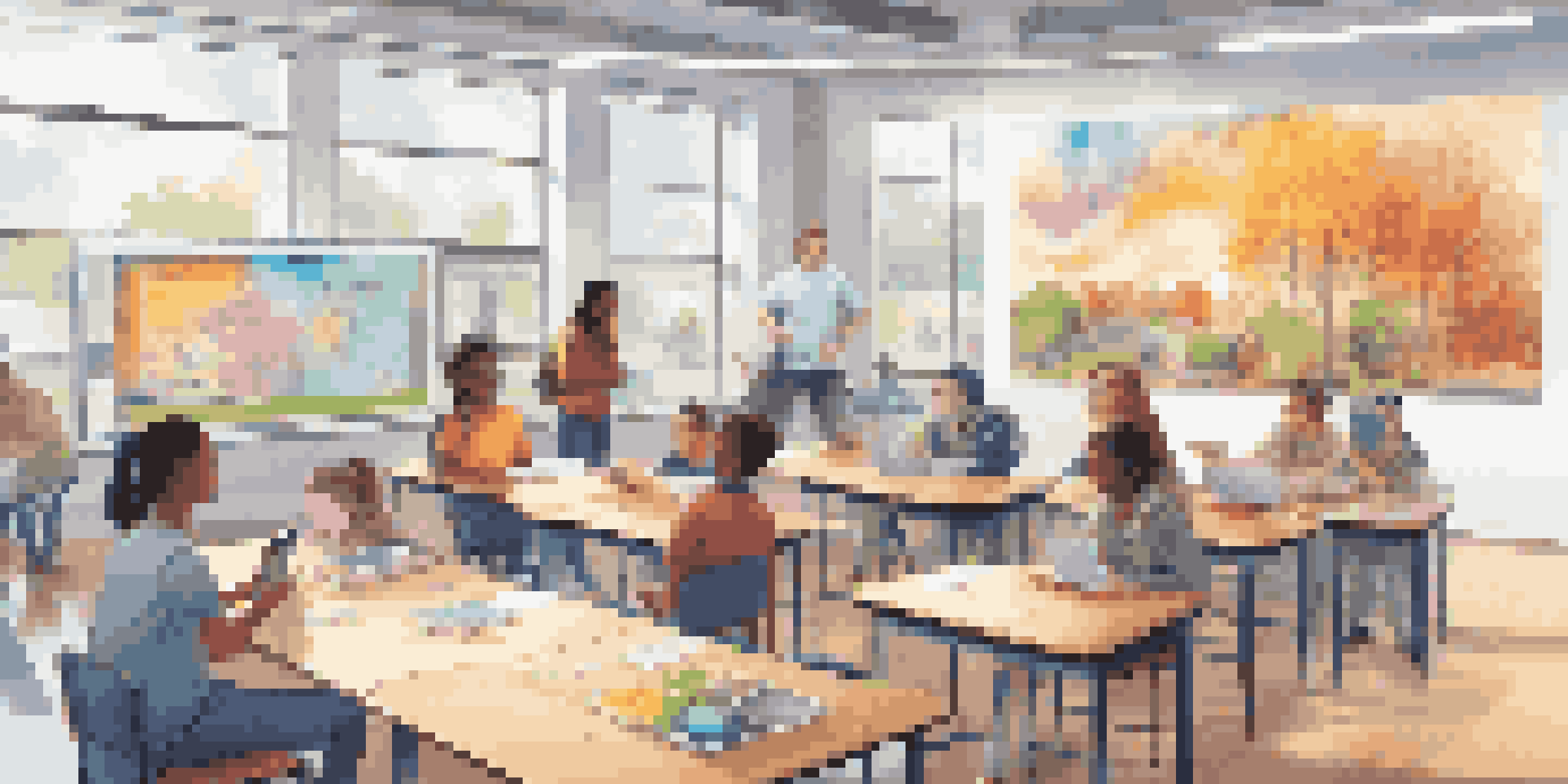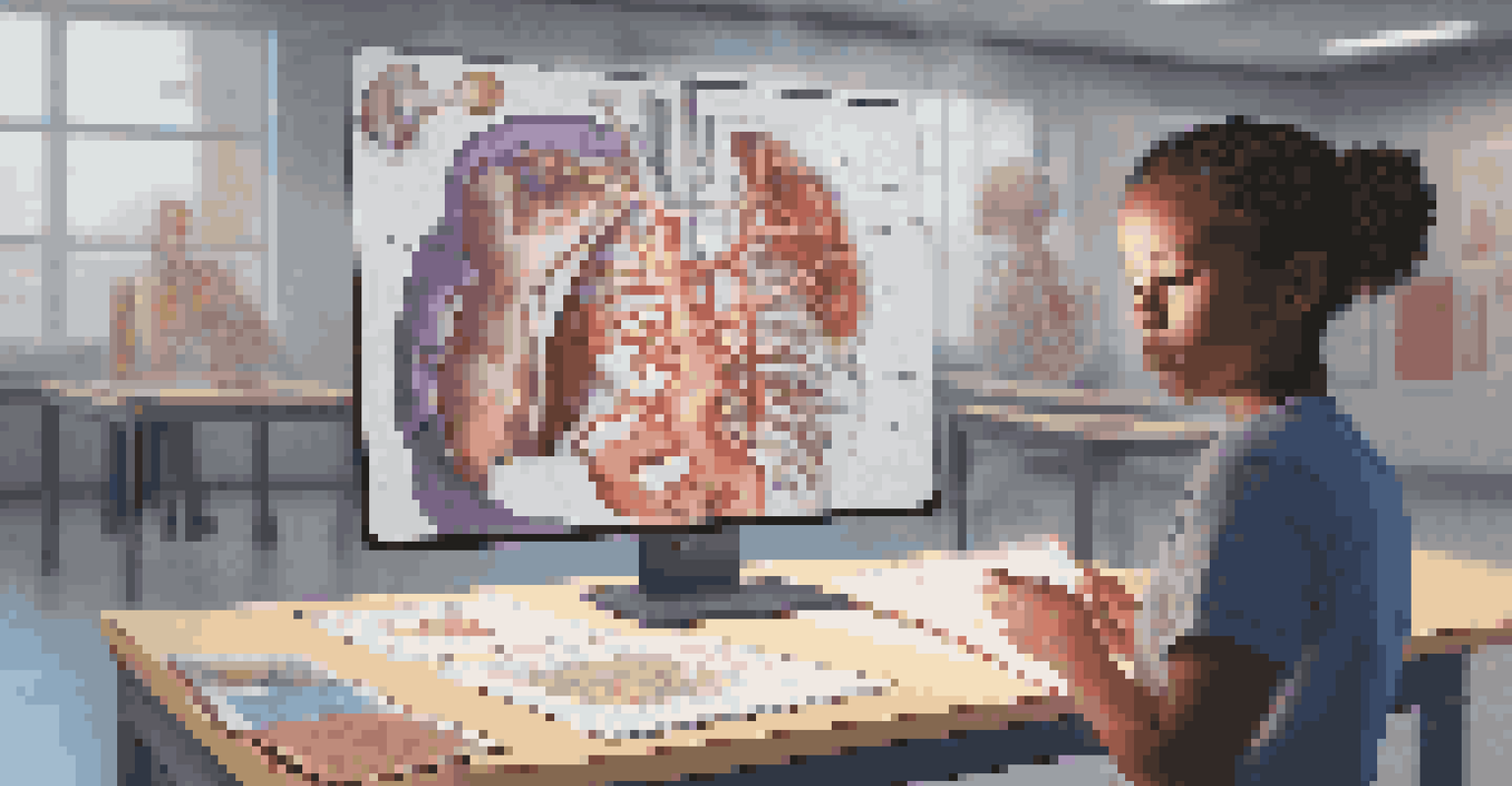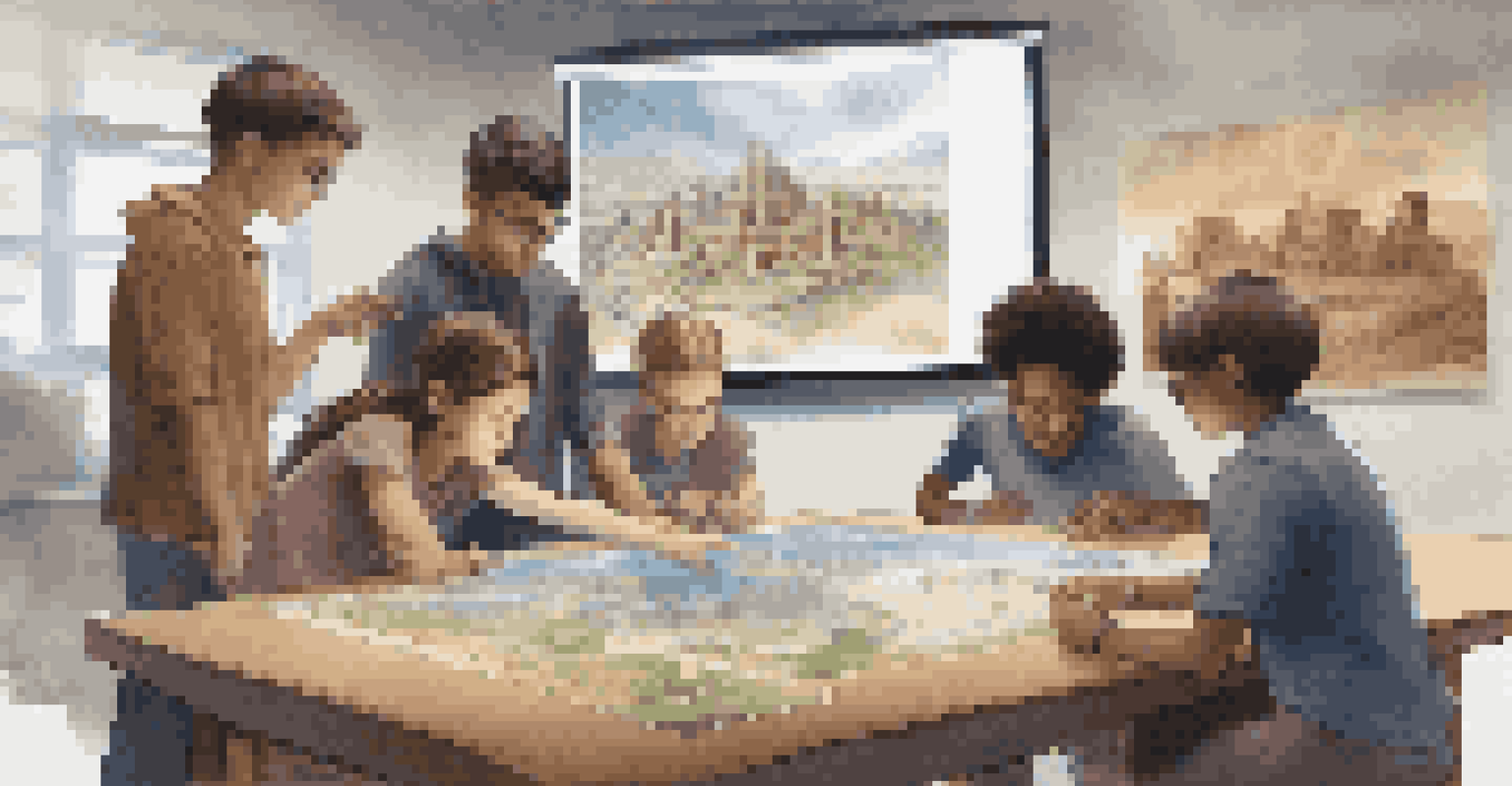The Integration of AR into Flipped Classrooms for Active Learning

Understanding Flipped Classrooms and Active Learning
Flipped classrooms are a modern teaching approach where traditional lecture content is delivered outside of class, often through videos. This method allows students to engage with the material at their own pace, freeing up classroom time for interactive, active learning experiences. Active learning encourages students to participate, collaborate, and apply their knowledge in real time, making the learning process more dynamic and effective.
Education is not the filling of a pail, but the lighting of a fire.
Imagine a classroom where students come prepared to discuss concepts rather than just passively absorb information. This shift not only fosters deeper understanding but also promotes critical thinking and problem-solving skills. In this environment, students become active participants in their education, driving their learning journey rather than being mere recipients of knowledge.
The integration of technology, particularly Augmented Reality (AR), takes this learning model to the next level. AR can provide immersive, interactive experiences that enhance the flipped classroom model, making learning more engaging and effective.
What is Augmented Reality in Education?
Augmented Reality (AR) overlays digital information onto the real world, allowing users to interact with both simultaneously. In education, this means students can visualize complex concepts through 3D models, interactive simulations, or animated content that enriches their understanding of the subject matter. For example, a biology student might use AR to explore the human body in a detailed, interactive way, making abstract concepts tangible.

Unlike Virtual Reality (VR), which creates a completely immersive digital environment, AR enhances the existing world, making it easier for students to relate new information to what they already know. This blend of real and digital worlds can lead to more meaningful learning experiences, as students can see the relevance of their studies in everyday life.
Flipped Classrooms Enhance Learning
Flipped classrooms allow students to engage with content at their own pace, freeing up valuable class time for interactive learning.
AR is particularly effective in a flipped classroom setting, where students can first engage with the content at home and then apply their knowledge through AR experiences in class. This combination fosters a deeper understanding and retention of information.
Benefits of Integrating AR in Flipped Classrooms
Integrating AR into flipped classrooms offers numerous benefits, primarily enhancing student engagement. When students can interact with their learning materials in a dynamic way, they are more likely to be invested in their education. For instance, instead of simply reading about historical events, students could visualize a 3D model of a historical site, bringing history to life right before their eyes.
The great aim of education is not knowledge but action.
Moreover, AR can cater to various learning styles, accommodating visual, auditory, and kinesthetic learners. By presenting information in multiple formats, students are more likely to grasp and retain complex concepts. This tailored approach can lead to improved academic performance and a more inclusive learning environment.
Additionally, AR can foster collaboration among students. Working together on AR projects encourages teamwork and communication skills, essential competencies in today’s workforce. As students collaborate, they not only learn from one another but also develop important social skills.
Challenges in Implementing AR in Education
While the potential of AR in flipped classrooms is significant, there are challenges to consider. One major hurdle is the accessibility of technology; not all students may have access to AR devices or compatible software. This disparity can lead to unequal learning experiences, which educators must address to ensure all students can benefit from AR-enhanced lessons.
Another challenge is the learning curve associated with new technology. Teachers need time and training to effectively integrate AR into their teaching practices. Without proper support, educators may feel overwhelmed, leading to underutilization of these innovative tools in the classroom.
AR Makes Learning More Engaging
Augmented Reality (AR) creates immersive experiences that help students visualize complex concepts, enhancing understanding and retention.
Moreover, the development of quality AR content can be resource-intensive. Educators may need to invest time and money into creating or sourcing effective AR resources that align with their curriculum. Balancing the benefits of AR with these practical considerations is essential for successful implementation.
Creating Effective AR Content for Learning
To leverage AR effectively in flipped classrooms, educators must focus on creating meaningful content. This involves aligning AR experiences with learning objectives to ensure that students are not just entertained but genuinely learning. For example, if the goal is to teach geometry, an AR app that allows students to manipulate shapes in a real-world setting can help solidify their understanding.
Collaboration with AR developers can also enhance content quality. By working together, educators can provide insights into curriculum needs, ensuring that the AR experiences are both educational and engaging. This partnership can lead to the development of specialized content that resonates with students and meets their learning requirements.
Finally, educators should encourage feedback from students on AR experiences. Understanding what works and what doesn’t can help refine the use of AR in the classroom, leading to continuous improvement and better learning outcomes.
Best Practices for Using AR in Flipped Classrooms
When integrating AR into flipped classrooms, adopting best practices can maximize its effectiveness. One essential practice is to provide clear instructions on how to use AR tools before students engage with them. This preparation ensures that students can focus on learning rather than troubleshooting technology during class time.
Another best practice is to incorporate AR experiences that promote collaboration and discussion among students. Group projects that utilize AR tools can foster teamwork, as students must communicate and share ideas to create a successful outcome. This collaborative approach not only enhances learning but also builds essential skills for the future.
Challenges in AR Implementation
Despite its benefits, integrating AR in education faces challenges like technology accessibility and the need for quality content development.
Additionally, it's crucial to assess the effectiveness of AR activities regularly. Gathering data on student engagement and knowledge retention can help educators determine whether AR is enhancing the learning experience or if adjustments are needed. This reflection allows for continuous improvement in teaching strategies.
The Future of AR in Education
The future of AR in education looks promising, particularly in the context of flipped classrooms. As technology continues to advance, we can expect more intuitive and accessible AR tools that will further enhance learning experiences. This evolution will likely make AR a staple in educational settings, transforming how students interact with content.
Moreover, as educators become more familiar with AR and its applications, there will be a broader range of innovative uses in various subjects. Imagine science classes conducting virtual experiments in real-time or history classes exploring ancient civilizations through immersive AR environments. The possibilities are endless, offering exciting opportunities for engaging and effective learning.

Ultimately, the integration of AR into education represents a shift towards a more interactive and student-centered approach. By embracing this technology, educators can empower students to take charge of their learning, preparing them for success in an increasingly digital world.